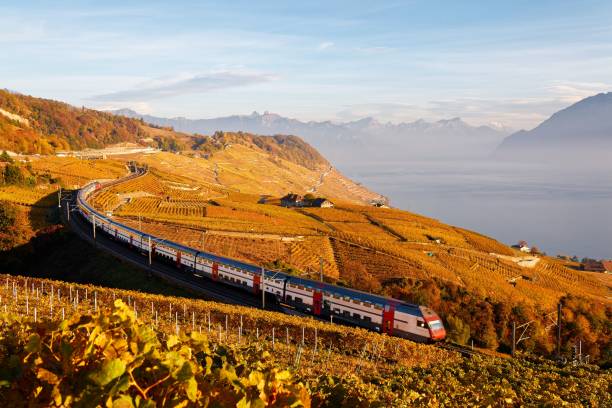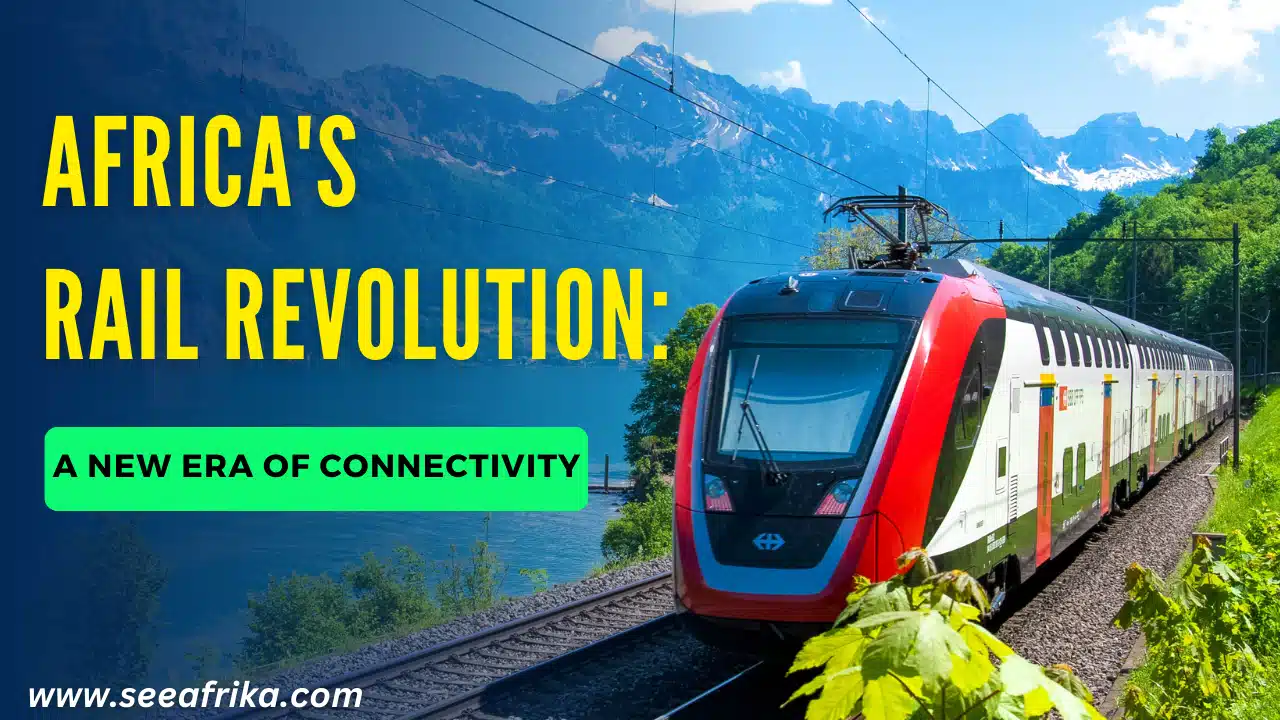Africa is on the brink of Africa’s rail revolution. The African Integrated High-Speed Railway Network (AIHSRN) is set to transform transportation across the continent. With an investment of $8.9 billion, this ambitious project aims to connect 60 cities over a distance of 1,243 miles.

The Vision Behind Africa’s Rail Revolution
The AIHSRN is not just about trains; it’s about connecting people and economies. This high-speed rail network will link major cities like Nairobi, Lagos, and Cairo. It will enhance trade, boost tourism, and improve access to essential services.
The project aligns with the African Union’s Agenda 2063, which promotes economic integration and political cooperation across Africa. By creating a modern rail system, Africa’s rail revolution aims to reduce travel times and transportation costs significantly.
The high-speed rail network will greatly contribute to this objective by improving trade routes, expanding labour mobility, and promoting the growth of Africa’s industrial base.
The rail network will boost regional connections and generate millions of jobs in maintenance, operations, and construction. Local economies will be drastically impacted by these new job prospects, especially in rural areas where unemployment is frequently high. By making it simpler for individuals to travel for work or pleasure, the train system will help increase access to healthcare and education.
Economic Impact
The rail revolution promises to reshape Africa’s economic landscape. It will facilitate intra-African trade by making it easier for businesses to transport goods. Faster travel times mean more efficient supply chains and increased competitiveness.
Moreover, the project is expected to create millions of jobs in construction, rail operations, and maintenance. These opportunities will be vital for local economies, particularly in rural areas where unemployment rates are often high.
Overcoming Challenges
Despite its potential, Africa’s rail revolution faces challenges. Securing funding is a primary concern. The project requires substantial investment from both African governments and international partners.
Political will is another hurdle. Different nations have varying priorities and infrastructure levels. However, the commitment to Pan-Africanism may help unite these countries in pursuit of a common goal.
Advanced Technology in Africa’s Rail Revolution
As part of Africa’s rail revolution, advanced technology is being implemented. Siemens Mobility has introduced Egypt’s first Velaro high-speed train as part of this initiative. These trains are designed for comfort and efficiency, capable of reaching speeds of 250 km/h.
The Velaro high-speed trains are built to survive the harsh environmental conditions of the area and are scheduled to run on the Egyptian rail lines. To guarantee smooth operations and passenger comfort, the trains are outfitted with specialised dust and sand protection due to Egypt’s high temperatures and frequent sandstorms. They are also constructed using cutting-edge energy-efficient technologies, which lessen the negative effects of travel on the environment and support the AIHSRN project’s sustainability objectives.
With a top speed of 250 km/h (155 mph), the trains will provide passengers with a quick and comfortable journey. Both business and leisure travellers will find the Velaro trains to be an appealing alternative because of their roomy seating configurations, business and regular class rooms, and onboard conveniences like Wi-Fi and power outlets.
The incorporation of such technology signifies a leap forward for Africa’s rail revolution. It showcases the continent’s commitment to modernizing its infrastructure while ensuring sustainability and passenger comfort.
Driving Trade and Development through Africa’s Rail Revolution
This high-speed rail revolution is expected to bolster Africa’s economy significantly. By connecting major economic zones, the AIHSRN positions Africa to compete on a global scale while improving the quality of life for its citizens.
With such transformative infrastructure projects underway, Africa’s rail revolution looks set to reshape the continent’s landscape and economy.
A Transformative Future
As the AIHSRN takes shape, it symbolizes Africa’s commitment to modernization and cooperation. This rail revolution represents a vision for a united continent.
Connecting landlocked countries to major ports will enhance economic resilience. Improved access to education and healthcare will also benefit communities across Africa.
The rail network’s ability to promote travel throughout Africa is one of its main benefits. Travellers will be able to easily discover the continent’s varied attractions thanks to quicker and easier transit. High-speed rail will make Africa accessible to travellers from around the world and significantly increase the region’s tourism sector, connecting the ancient Egyptian pyramids with the vibrant markets of Nairobi. By making travel easier for students, businesspeople, and leisure travellers, the project will also promote cross-cultural interaction.
Conclusion: Embracing Africa’s Rail Revolution
The African Integrated High-Speed Railway Network is poised to revolutionize travel and trade across the continent. By linking key cities and enhancing connectivity, it will foster economic growth and regional collaboration.
While challenges remain, the potential benefits of Africa’s rail revolution far outweigh them. With continued investment and collaboration, Africa is on its way to a brighter future—one defined by innovation, trade, and shared prosperity through its remarkable rail revolution.




